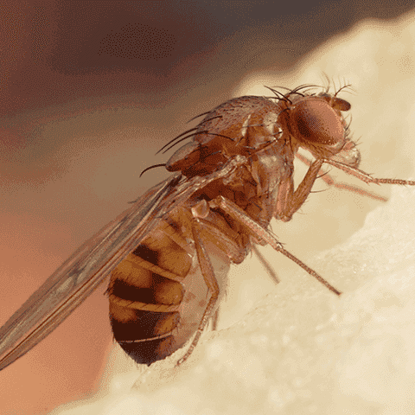
Fabric & Pantry Pests

About
What are fabric & pantry pests?
Fabric and pantry pests can end up in any of our homes at one time or another; this is because they provide them with ample feeding and breeding sites. Pantry pests and fabrics pests are typically types of moths, flies, and beetles.
Pantry pests feed on and damage products that we often store in our kitchens like flour, pancake mix, cereals, spices, dry pet food, birdseed, and chocolate. Examples of pantry pests include the following:
- Fruit flies
- Indian meal moths
- Rice weevils
Fabric pests feed on and damage items made of organic materials like wood, fur, feathers, silks, and animal hair. Their feeding habits cause damage to rugs, furniture, clothing, blankets, and more. Examples of pantry pests include the following:
- Carpet beetles
- Clothes moths
- Rice weevils
Are fabric and pantry pests dangerous?
Both pantry and fabric pests aren't a direct danger to people but cause some big problems when they move into our homes. When it comes to pantry pests, the biggest threat is food waste; dry goods that they invade and lay their eggs on become contaminated and need to be thrown out. Pantry pests are damaging inside of our homes and pose an economic threat to the food industry.
Fabric pests are also damaging to have within our home. They cause harm to fabrics and other items made from organic materials stored in our homes. Fabric pests are also a problem inside of museums and other storage facilities.
The larvae of both pantry and fabric pests are most damaging. The female lays its eggs on top of a suitable food source, and once the larvae hatch, they begin to feed on the provided food source: your food or stored items!
Why do I have a fabric and pantry pest problem?
The most likely reason that fabric and pantry pests are inside your home is that they came in on something already infested with their eggs or larvae. Food purchased from the store is a regular culprit of a pantry pest infestation. Fabric pests are often brought inside on things like used furniture, clothing, boxes, and rugs.
Sometimes adults will find a way into your home on their own, common with fruit flies. When fruit flies live outside in your gardens near your home, it is easy for them to fly inside through open windows and doors. Once inside, the adult females will lay their eggs on top of fermenting liquids, ripe fruit, vegetables, or debris in clogged drains.
Where will I find fabric and pantry pests?
You'll usually find pantry pests and fabric pests in dark, quiet areas of a home or wherever their preferred food sources are stored. Take, for example, the fruit fly; you'll often see them flying around our kitchens because that is where we keep our fruits and vegetables.
Other pantry pests and fabric pests take up residence in the following areas of a home:
- Pantries and kitchen cabinets
- Closets
- Crawlspaces
- Cardboard boxes
- In or under upholstered furniture
How do I get rid of fabric and pantry pests?
Pantry and fabric pests are frustrating to deal with, and more often than not, you don't notice them until some damage is already done. At Hangtown Pest Control, we can provide you with the effective services needed to maintain a pest-free household. Our professionals train continuously and use only the best products, ensuring that you always receive top-notch services!
We design our pest control solutions to meet the unique needs of home and business owners located in and around Placerville, CA. If you would like to learn more about eliminating pantry or fabric pests from your structure, call us today!
How can I prevent fabric and pantry pests in the future?
In addition to our home pest control and commercial pest control services, protect your property from pests with the following prevention tips:
- Professionally clean carpets, upholstered furniture, and curtains.
- Regularly vacuum and dust your home.
- Use pest-proof boxes or bags to store fabric items in, not cardboard boxes.
- Do not purchase food products with rips in the packaging.
- Store fruit and vegetables in the fridge, not out on counters and tables.
- Regularly inspect foods stored in the pantry for signs of pantry pests and eliminate older or out-of-date foods.
- Keep dry pet food in metal or plastic containers with a locking lid.
- Make sure open windows and doors have intact screens in them.